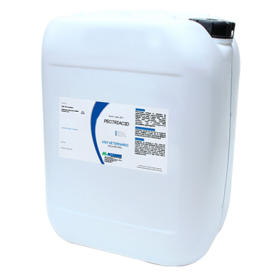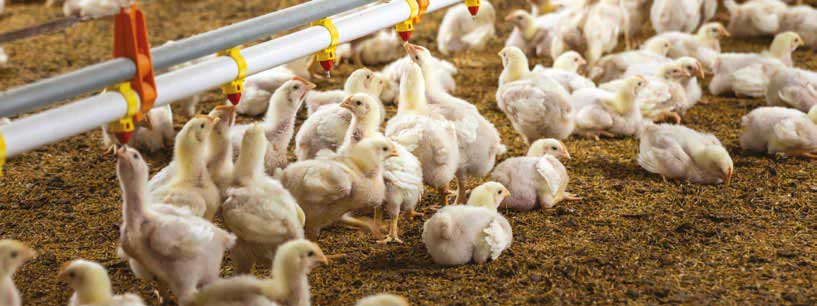
Animal Nutrition
Use Of a Water Acidifier PL ORGANICS H2O For Nutritional Utilization In Broilers: An Updated Review
To read more content about aviNews International December 2023
Animal Nutrition
To read more content about aviNews International December 2023
This article is an updated review that addressed on the use of a commercial water acidifier on broiler nutrition and performance, focusing on the gut health of its active components.
Practical considerations underline the need to adapt the application to specific conditions, using pilot tests and constant monitoring through a monitoring plan. The positive contribution of this additive to the optimization of poultry production and profitability at a global level is highlighted.
Introduction
The poultry industry plays a key role in the production of animal protein globally. Improving production efficiency and profitability in this sector is essential, so the use of additives for drinking water has gained relevance as a strategy to improve intestinal health and broiler performance.
Modern poultry farming is always in continuous improvement and searching for alternatives that counteract the negative effects of gut health challenges.
It is well known that one of the factors that must be controlled for birds to show their genetic potential is feed, and having products that promote intestinal integrity is critical.
Water acidifiers are a tool that have been shown to condition the intestinal microbiota since, the intestine provides a favorable environment for the development of different germs that are transmitted orally through the ingested feed as well as other organisms that benefit the breakdown or production of nutrients.

In addition, it promotes animal growth by guaranteeing a decrease in intestinal pH, inhibiting important pathogens such as Salmonella and Coliforms, thus favoring intestinal health and improving the absorption of nutrients from the diet in an efficient way because it improves digestive processes by stimulating gastric secretions, converting pro-enzymes to their active form, and allowing the enzymatic functionality of the intestine at an optimum pH.
This contribution improves the availability of the nutrients supplied by maintaining the balance of the intestinal flora in situations of stress in birds, such as:
Nutritional benefits of broilers with mixed additives containing formic acid, acetic acid and ammonium formate
Improved nutrient digestibility:
Formic acid, present in some commercial additives, has been shown to have a positive effect on nutrient digestibility by reducing the pH in the digestive tract, thus favoring enzyme activity, and improving the breakdown of fibrous components of the diet (Baurhoo et al., 2017).
Antimicrobial eff ect and pathogen control:
Foth formic acid and acetic acid possess antimicrobial properties that reduce the pathogen load in the gastrointestinal tract and promote balanced intestinal microbiota beneficial to bird health (Molist et al., 2019).
Stimulation of feed intake:
The addition of acetic acid in drinking water has been shown to stimulate appetite in broilers, leading to higher feed intake and, therefore, increased growth and development of the birds (Herrera et al., 2020).

Productive performance of broilers with mixed additives containing formic acid, acetic acid, and ammonium formate
Increase in live weight:
Recent studies by González et al., (2018), report an increase of up to 7% in live weight of broilers treated with these additives compared to the control group.
Also, the synergism of the inclusion of ammonium formate and formic acid in the drinking water (1 l/1000 l) in broilers for six weeks increased body weight (2,509 g) with respect to the control group (2,208 g). Feed intake (g) and daily weight gain (g) behaved in the same way.
Improvement in feed conversion:
The inclusion of additives in the drinking water can result in a significant improvement in feed conversion, indicating a more efficient utilization of nutrients (Hassanpour et al., 2020).
Similarly, treatment of drinking water with a mixture of organic acids including acetic acid during preslaughter feed restriction in broilers decreased body weight losses (128 ± 57 g) when compared to the control group (176 ± 45 g) (Meconi et al., 2014).
Reduced mortality:
Administration of these additives in water has been shown to reduce the incidence of intestinal diseases, resulting in a lower mortality rate compared to untreated groups (Józefiak et al., 2018).
Reduction of intestinal pathogens:
Water acidification using a combination of formic acid, acetic acid, ammonium formate and copper sulfate (1 l/1000 l) reduced the quantification of E. coli in duodenal contents (1,228 CFU/g) with respect to the group that consumed untreated water (2,868 CFU/g) (Obando, 2018).

Clinical treatment support:
In a study conducted in Brazil, the effect of using a drinking water additive containing formic acid, acetic acid, and ammonium formate on the intestinal health of broilers was evaluated.
Practical considerations for the use of PL ORGANICS H2O and application recommendations
Different evaluations show that PL ORGANICS® H2O favors feed conversion of growing broilers when consuming water with pH 4.0-4.5 which is related to an improvement in intestinal stimulation while, it has also shown to inhibit important pathogens such as Salmonella and water sanitation indicators such as total and fecal coliforms by promoting an adequate intestinal microbiota.
Both cases presume efficient nutrient availability through digestive stimulation by acidic gastric secretions, promoting the conversion of pro-enzymes to their active form and allowing digestive enzymes to work at optimum pH.
The inclusion of PL ORGANICS® H2O to the drinking water presents nutritional benefits and improves broiler production performance. The variability between farms and flocks highlights the importance of adjusting dosages and timing of application in a specific manner. Proper implementation of these additives can contribute to optimizing poultry production and improving overall profitability.